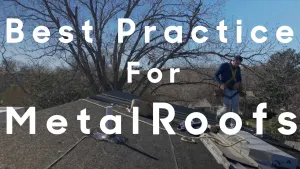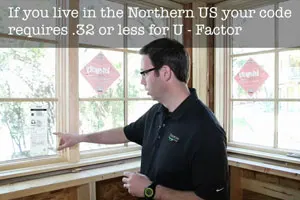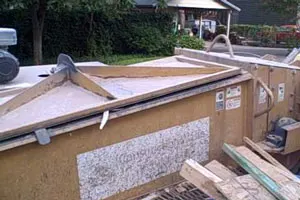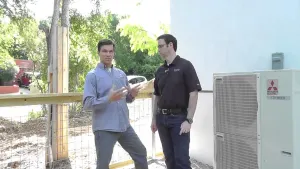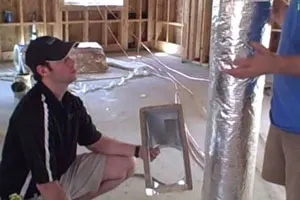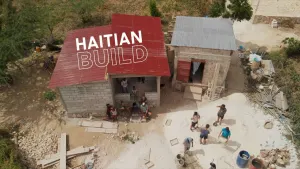The type of roof cladding you choose for a house has many long-term consequences. It’s not only a significant expense, but roofing is vital to building longevity, and it helps set the tone visually for the house exterior. Making the right choice involves balancing performance, cost, and aesthetics.
Asphalt shingles are the undisputed king of the residential roofing market, and not without good reason. Asphalt is typically the least expensive option, and shingles come in enough variety to satisfy just about any color and texture preference. If asphalt isn’t your cup of tea, metal roofing and clay and concrete tile are two additional possibilities. They may be better architectural fits in some parts of the country, and both materials have characteristics that make them appealing despite their higher initial cost. Remember, the installation is as important as the material choice!
Resistance to weather and other environmental hazards is a key consideration. Hurricanes and high winds along the coast, powerful hailstorms, and wildfires in the far West all are facts of life. Builders should at least be aware of local conditions (and any applicable code requirements) before settling on a roofing material. Roofing also has implications for energy-efficiency, particularly in areas where summer sunlight is intense. Finally, builders may want to consider what happens to roofing when it has to be replaced; some types of roofing are more recyclable than others. Initial cost, while important, is only one of several factors to weigh.
Asphalt: Available and easy to install
In addition to relatively low cost, asphalt roofing has two other things going for it: it’s not especially difficult to install (no special tools required), and it’s available at just about any lumber yard and big box store. These factors help explain why it remains so popular.
Basic three-tab shingles are being pushed aside by laminated shingles (also called architectural shingles) that are thicker, last longer, and are closer in appearance to traditional materials like cedar. High-performance laminated shingles, which have high wind and hail resistance, are yet another step up. They can cost up to 40% more than standard laminated shingles but increasingly severe weather and pressure from insurance companies for more durable roofing are driving demand. Some premium brands come with a 50-year guarantee, 150 mph wind ratings, and Class A fire ratings.
If you live in hail country, you’ll want to pay attention to the impact resistance rating. Underwriters Laboratories (UL) uses a standard testing protocol in which steel balls are dropped on roofing from various heights to see how well shingles resist impact damage. Roofing with a Class 4 rating are the most impact resistant.
Solar reflective roofing can help reduce cooling loads and keep interiors cooler by absorbing less infrared radiation than conventional roof coverings. According to the Department of Energy, a cool roof can stay 50° cooler on a summer day than a standard roof. That translates into lower cooling costs.
Lowe’s sells basic three-tab shingles with a 25-year warranty, a 60 mph wind rating, and no impact rating for about $90 per square (100 square feet). By comparison, reflective laminated shingles with a limited lifetime warranty, a 130 mph wind rating, and a Class A fire rating cost $256 per square.
One other consideration: worn out asphalt shingles typically end up in a landfill. Recycling is available in some but not all areas.
Metal roofing in for the long haul
Even builders who really like metal roofing will tell you it can be quite a lot more expensive than asphalt shingles — two or three times as much. But with life expectancy of better grades measured in multiple decades, metal roofing offers long-term performance and aesthetic benefits with little to no maintenance. Metal roofing is very easy to recycle.
Take a drive in the country and you’re bound to see plenty of “barn tin,” those corrugated roofing panels on barns and sheds. Big box stores sell an economy version in galvanized steel for about $1 a square foot. But metal roofing is available in many other varieties, including shingles that are designed to look like wood shakes or tile. Colors run the gamut, from browns and blacks to blue, red and green.
Materials include aluminum, steel, copper, and zinc. Steel is the most common. It can be galvanized (the Metal Roofing Alliance recommends a minimum of G-90, 90 ounces of zinc per 100 sq. ft.) or protected from corrosion with a proprietary coating such as Galvalume, which consists of zinc, aluminum and silicone. Aluminum is lighter than steel and because of the metal’s corrosion resistance might be recommended for coastal and marine installations. Copper and zinc are both what the industry calls “natural metals.” They are highly resistant to corrosion and develop a distinctive patina once they’ve been exposed to the weather for a while. Copper and zinc are the most expensive — copper can run up to $15 per square foot (that’s $1500 per square material only!), according to the website Improvenet.com.
The traditional benchmark for quality is a standing-seam roof. Panels running the full height of the roof are attached to the roof deck with metal clips. Seams are traditionally overlapped and crimped right on the roof with a special tool. Builders now can get panels that snap together and don’t require any special tooling. Metal roofing sheds snow easily, and standing-seam versions are ideal for attaching solar panels (because they can clamp to the seams without penetrating the roof!).
Metal roofing is non-combustible and available with Class 4 hail rating. In hot climates, look for roofing with a high Solar Reflective Index for more energy savings. Other considerations: make sure to use the right underlayment — not 15# building felt — and provide some kind of ventilation between the roof deck and the roofing to help dissipate away condensation.
Clay and concrete tile
Like copper and slate, both of these roofing materials are in the cost-more-but-last-longer category. Of the two, clay roofing tiles have a much longer history. Some tile roofs in Europe have been in place for hundreds of years. Concrete roofing tiles are a more recent innovation. They’re somewhat lighter than clay, and as much as 50% cheaper.
Barrel-shaped tiles are a familiar sight on houses with a Spanish architectural theme, but with some caveats these tiles can be used just about anywhere, including locations with freeze-thaw cycles and lots of snow.
Clay tiles start at about $10 a square foot and go up from there. Denser and thicker versions will do better in cold climates because they’re less likely to absorb water and crack as temperatures drop. Concrete tile also can be highly durable, with a Class A fire rating and Class 3 and Class 4 hail ratings. A transferrable lifetime warranty is available on some concrete roofing tiles.
Clay and concrete tile have high fire and UV resistance. But they’re not really a watertight roof covering. Some water is bound to get through, so a high-quality roofing underlayment is a good idea. They should not be installed on roofs with a pitch of less than 3:12, and remember that unlike asphalt and metal these tiles should not be walked on. If there’s a problem on the roof, hire a pro to fix it.

 Share on facebook
Share on facebook Tweet
Tweet Email
Email Share on Linkedin
Share on Linkedin




